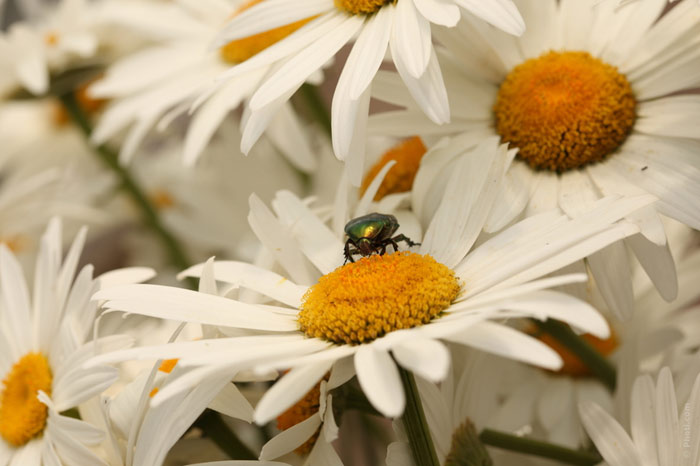Insects may appear even in the cleanest and tidiest homes. Our article today will tell you how to get rid of them.

- Flies. House flies cannot stand the smell of tansy; if there is a plant in the room, the flies will fly away.
- Fewer flies will fly into the window if the frame is moistened with vinegar.
- Flies cannot stand the smell of beeswax, turpentine, castor oil, and most of all – kerosene.
- When washing windows and floors, add a little kerosene to the water. In summer, draw two layers of gauze all over the window or hang cut strips of paper on the window leaf.
- An old and proven method for killing flies is using a sticky tape or paper. You can make it on your own. Put 20 g of castor oil and rosin into a tin can, place the can in hot water and heat up until the contents melts. Add a little honey or jam to the resulting mass, then spread it with a brush on thick paper.
- Flies will not sit on the mirror if you rub it with raw onion, and then dry it with a soft cloth.
- Moth is afraid of light and air. The things that are often washed and cleaned do not need any protection against moth. Typically, moth will not appear in the clothing, which is occasionally dried in the sun.
- Moth is afraid of: dried orange peel, shag, tobacco leaves, geranium, tarragon, St. John’s wort, walnut leaves.
- Store dry things in plastic bags (it is recommended first to wrap fur in paper) or in paper packs or bags, well tied or sealed with adhesive tape.
- Domestic ants. To destroy ants you need to put salt in their place, as well as the places where they appear.
- Ants do not like the smells of parsley, onion, garlic, elderberry leaves, wild mint, wormwood.
- To get rid of the ants prepare the bait of 50 grams of water, 5-6 g of borax, 50 grams of sugar and put in small portions in the places where you see ants. Fresh yeast, diluted with water to the consistency of a thick cream with the addition of something sweet will also be helpful.
- For ants not to be able to get into foods, the outer edges of dishes and packages in which food is stored should be brushed with sunflower oil.
- Mosquitoes. Mosquitoes cannot stand the smell of geranium, anise oil, and camphor smoke.
If you add 5-10 drops of anise and clove oil or valerian drops (you can use broth instead of clove oil: 5 g of cloves boiled for 15 minutes in a glass of water) into 30-40 ml of eau de cologne, you will get a mosquito repellent with the protective effect for about 1 hour. - Itching from mosquito bites can be removed due to rubbing the bite with ammonia (a mixture of equal amounts of ammonia and water) or a solution of baking soda (1/2 tablespoon and 1 cup of water).
- To combat bedbugs one uses a product consisting of a mixture of 10 g of naphthalene and 100 g of well-dried and ground into powder chrysanthemum leaves and flowers of chamomile.
- Denatured alcohol is an effective means to deal with bedbugs; moreover, it does not leave stains on the walls, furniture and so on. Denatured alcohol is used to pour in the nests of bedbugs.
- Fleas lay eggs in cracks of floors and in the dust. To get rid of insects, it is necessary to disinfect the floors within a few days. For disinfection we recommend the following means: cook 30 g of dried and 10 g of fresh leaves of wormwood for 10 minutes in 0.3 liters of water, add 20 g of planed soap to the solution. The resulting solution is mixed into water when washing floors.
- Cockroaches and other household insects become accustomed to certain insecticides, so it is recommended to alternate the used chemicals.
- Cockroaches cannot stand the smell of ammonia, so it can be added to the water for washing floors.
- No other method is more effective against spiders than keeping the house clean.
- To protect furniture from bugs, you should inspect it at least 1-2 times a year, especially in its lower part. It is recommended to wipe the unvarnished and unpainted space with a cloth dampened in liquid paraffin or a mixture of three parts of turpentine and one part of kerosene;
- One can also use a solution of naphthalene in gasoline.
- If there are holes with the diameter of about 2 mm and yellowish dust on the surface of the furniture – it is a sure sign of the furniture bug. For processing the furniture affected by bugs, it is most convenient to use petrolatum. It is put into the holes made by bugs, filling them to the edge, and then the holes are covered with paraffin or luting. After 2-3 weeks, the procedure is repeated. If there are no new holes within one month, the fight against the bugs can be stopped.










